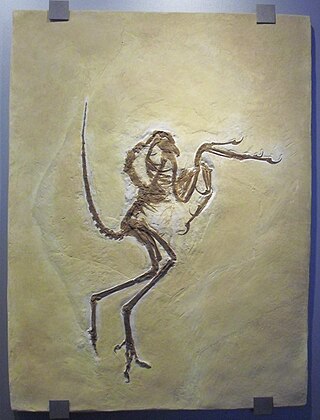
Poland, officially the Republic of Poland, is a country in Central Europe. It is divided into 16 administrative provinces called voivodeships, covering an area of 312,700 km2 (120,700 sq mi). Poland has a population of over 38 million and is the fifth most populous member state of the European Union. Warsaw is the nation's capital and largest metropolis. Other major cities include Kraków, Wrocław, Łódź, Poznań, Gdańsk, and Szczecin.

Louis I, also Louis the Great or Louis the Hungarian, was King of Hungary and Croatia from 1342 and King of Poland from 1370. He was the first child of Charles I of Hungary and his wife, Elizabeth of Poland, to survive infancy. A 1338 treaty between his father and Casimir III of Poland, Louis's maternal uncle, confirmed Louis's right to inherit the Kingdom of Poland if his uncle died without a son. In exchange, Louis was obliged to assist his uncle to reoccupy the lands that Poland had lost in previous decades. He bore the title of Duke of Transylvania between 1339 and 1342 but did not administer the province.

The European bison or the European wood bison, also known as the wisent, the zubr, or sometimes colloquially as the European buffalo, is a European species of bison. It is one of two extant species of bison, alongside the American bison. The European bison is the heaviest wild land animal in Europe, and individuals in the past may have been even larger than their modern-day descendants. During late antiquity and the Middle Ages, bison became extinct in much of Europe and Asia, surviving into the 20th century only in northern-central Europe and the northern Caucasus Mountains. During the early years of the 20th century, bison were hunted to extinction in the wild.

Jogaila, later Władysław II Jagiełło, was Grand Duke of Lithuania, later giving the position to his cousin Vytautas in exchange for the title of Supreme Duke of Lithuania (1401–1434) and then King of Poland (1386–1434), first alongside his wife Jadwiga until 1399, and then sole ruler of Poland. Born a pagan, he converted to Catholicism in 1386 and was baptized as Ladislaus in Kraków, married the young Queen Jadwiga, and was crowned King of Poland as Władysław II Jagiełło. In 1387, he converted Lithuania to Catholicism. His own reign in Poland started in 1399, upon the death of Queen Jadwiga, lasted a further thirty-five years, and laid the foundation for the centuries-long Polish–Lithuanian union. He was a member of the Jagiellonian dynasty in Poland that bears his name and was previously also known as the Gediminid dynasty in the Grand Duchy of Lithuania. The dynasty ruled both states until 1572, and became one of the most influential dynasties in late medieval and early modern Europe.

A heath is a shrubland habitat found mainly on free-draining infertile, acidic soils and characterised by open, low-growing woody vegetation. Moorland is generally related to high-ground heaths with—especially in Great Britain—a cooler and damper climate.
The World Chess Solving Championship (WCSC) is an annual competition in the solving of chess problems organized by the World Federation for Chess Composition (WFCC), previously by FIDE via the Permanent Commission of the FIDE for Chess Compositions (PCCC).

Neurotrichus is a genus of shrew-like moles. It is classified, together with the fossil genus Quyania, in the tribe Neurotrichini of the subfamily Talpinae. The only living species is the American shrew-mole (N. gibbsii) of the northwestern United States and British Columbia. A fossil species, Neurotrichus columbianus from the Hemphillian of Oregon, was placed in the genus in 1968, but this animal is now thought to be more closely related to the Chinese fossil genus Yanshuella.

Poland competed at the 1988 Summer Olympics in Seoul, South Korea. Poland returned to the Summer Olympic Games after having boycotted the 1984 Summer Olympics. 143 competitors, 111 men and 32 women, took part in 105 events in 19 sports.

Leo Beenhakker CM is a Dutch football coach. He has had an extensive and successful career both at club and international level. He led both Ajax and Feyenoord to Dutch championships and also had domestic success with Real Madrid. At international level, he led Trinidad and Tobago to the 2006 FIFA World Cup and Poland to UEFA Euro 2008, both firsts for each nation. His role in Spanish football has earned him the nickname Don Leo, largely due to his fondness of cigars and dry humour.

Scirpus is a genus of grass-like species in the sedge family Cyperaceae many with the common names club-rush, wood club-rush or bulrush. They mostly inhabit wetlands and damp locations.

Wigry National Park is a national park in Podlaskie Voivodeship in north-eastern Poland. It covers parts of the Masurian Lake District and Augustów Primeval Forest. It is named after lake Wigry, the largest of the park's many lakes. It is also classed as a Ramsar wetland site, one of 13 such sites in Poland.

An oceanarium can be either a marine mammal park, such as Marineland of Canada, or a large-scale aquarium, such as the Lisbon Oceanarium, presenting an ocean habitat with marine animals, especially large ocean dwellers such as sharks.

Teratosaurus is a genus of rauisuchians known from the Triassic Stubensandstein of Germany. It is estimated to be 6.2 meters (20.35 ft) long.

Wellnhoferia is a genus of early prehistoric bird-like theropod dinosaur closely related to Archaeopteryx. It lived in what is now Germany, during the Late Jurassic. While Wellnhoferia was similar to Archaeopteryx, it had a shorter tail and its fourth toe was shorter than in Archaeopteryx. Andrzej Elżanowski (2001) of the Institute of Zoology of the University of Wrocław, Poland, determined the differences resulted from a "phylogenetic reduction rather than individual variation."

Urotrichus is a genus of talpid that contains a single living species, the Japanese shrew mole (Urotrichus talpoides). Two fossil species are also known.

In biology, taxonomic rank is the relative level of a group of organisms in an ancestral or hereditary hierarchy. A common system of biological classification (taxonomy) consists of species, genus, family, order, class, phylum, kingdom, and domain. While older approaches to taxonomic classification were phenomenological, forming groups on the basis of similarities in appearance, organic structure and behaviour, methods based on genetic analysis have opened the road to cladistics.

Vatican City pursued a policy of neutrality during World War II, under the leadership of Pope Pius XII. Although the city of Rome was occupied by Germany from September 1943 and the Allies from June 1944, Vatican City itself was not occupied. The Vatican organised extensive humanitarian aid throughout the duration of the conflict.
Józef Razowski is a Polish entomologist and lepidopterist specializing in Tortricidae. He is an honorary member of the Polish Entomological Society and a working member of the Polish Academy of Arts and Sciences (PAU). From 1988 to 1997, Razowski headed the Institute of Systematics and Evolution of Animals.

Bangladesh–Poland relations refer to the bilateral relations between Bangladesh and Poland. Poland was the sixth country to recognize Bangladesh. Diplomatic relations between the two countries were officially established on 12 January 1972. The Polish ambassador to India, who is resident in New Delhi, is also accredited to Bangladesh. Bangladesh has an embassy in Warsaw.
Germanosaurus, meaning "German lizard", is an extinct aquatic genus of nothosaurid sauropterygian known from the early Middle Triassic Lower Muschelkalk of what was known as Upper Silesia, now a part of Poland. The type species of Germanosaurus is G. latissimus, originally named as a species of Nothosaurus. After a new generic name was erected for it, the holotype fragmentary skull was lost, possibly during World War II. Rieppel (1997) thus considered the species to be a nomen dubium in the species. However, from surviving illustrations and descriptions of the material, he concluded that another taxon known as Cymatosaurus schafferi, is referable to Germanosaurus and possibly even represents the same species as G. latissimus. Rieppel removed the species from Cymatosaurus and created the new combination G. schafferi, making it the only valid species of Germanosaurus diagnosable to the species level.














